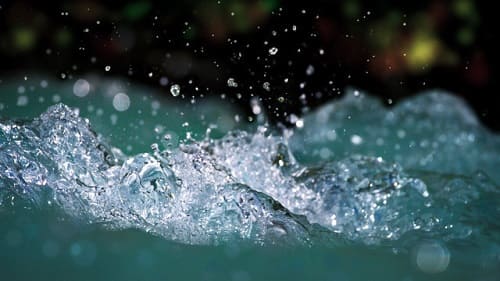Access to safe drinking water is a basic human right. Yet billions of people are living without it. A recent report reveals that about half of the U.S. water is too polluted for drinking, fishing, or swimming.
In a report published by the Environmental Integrity Project (EIP), over 700,000 miles of waterways are impaired by pollution. Indiana, with 24,395 water bodies considered impaired for recreation and swimming, tops the list of the states with the dirtiest waterways. Oregon ranks second, and North Carolina comes third.
Extensive industrialization, rapid urban growth, and lack of regulations resulted in a surge in water pollution. This has made it difficult for people to access clean and safe water.
Fortunately, technology can help address the issue of water contamination. In this article, we’ll explore modern technologies that filter contaminants from water. But before that, let’s take a look at some major water contamination events that took place in the U.S.
Water Contamination in the U.S.: 3 Major Events
1. The Woburn, Massachusetts Water Pollution
The river in Woburn, Massachusetts, was polluted with industrial solvents between 1969 and 1979. Primarily, perchloroethylene (PCE) and trichloroethylene (TCE) were the two chemicals that contaminated the water.
Early findings reveal that twelve children exposed to the toxic water were diagnosed with leukemia.
2. The Camp Lejeune Water Contamination Crisis
Camp Lejeune water contamination crisis is among the worst water contamination incidents in U.S. history. For nearly three decades, the water supply of the military base was tainted with VOCs. PCE, TCE, vinyl chloride, and benzene are among the four chemicals that were present in the drinking water of Camp Lejeune.
Around 70 chemicals were found in the water treatment plants– Tarawa Terrace and Hadnot Point– that supplied water at Camp Lejeune, notes TorHoerman Law.
Various scientific and medical studies link these chemicals to several health conditions. One study published in the Journal of Clinical Oncology associates exposure to contaminated water with the development of genitourinary cancers, including bladder and kidney.
Non-Hodgkin’s lymphoma, adult leukemia, multiple myeloma, breast, cervical, and esophageal cancer are other medical conditions linked with the contaminated water of Camp Lejeune.
Some time ago, seeking justice for the damages sustained from exposure to polluted water was impossible for veterans. However, the passing of the Camp Lejeune Justice Act allows qualifying service members and their families to recover compensation.
Military and civilian personnel who resided in the base for at least 30 days between August 1, 1953, and December 31, 1987, are eligible to file the Camp Lejeune water contamination lawsuit.
While it’s hard to determine the exact payout, lawyers estimate that settlement amounts could be over one million dollars.
3. The Flint Water Crisis
Another water contamination crisis that hit the headlines was the Flint, Michigan, water crisis.
It began when city officials switched its drinking water supply from Detroit’s system to the Flint River as a cost-effective move. Inadequate testing and treatment of the water resulted in a host of health issues for the residents.
Studies revealed that the contaminated water led to an increase in blood lead levels in the city’s children. Later, water samples collected from over 200 homes disclosed that the water was tainted with lead.
Technologies That Help Clear Contaminants From Water
Here are some technologies used in water treatment that purify water:
1. The Use of Nanotechnology
An easy and practical approach to cleaning contaminated water is the use of nanotechnology. This technology removes toxic chemicals such as mercury and arsenic, different types of bacteria, and sediments from water.
Nanotechnology relies on titanium dioxide to filter out toxins from water. It also uses ultraviolet rays to disintegrate unrefined substances.
This method of water purification is relatively affordable. Plus, it’s environmentally friendly because it reduces the buildup of microorganisms that grow rapidly on drenched surfaces.
2. U.V. Purification
This water purification method kills contaminants such as bacteria and other harmful substances from water through ultraviolet light.
U.V. purification systems contain a minute mercury lamp that emits low-wave U.V. radiation. This radiation irradiates the water and penetrates the cells of viruses and microorganisms, destroying their capability to reproduce.
However, the U.V. purification system requires other filtration processes to purify the water, as the dead germs remain in it.
3. The RO Purification System
Reverse osmosis (RO) is the most common method to filter impurities from water. This process uses membrane technology to remove dissolved salts and other toxins that are usually present in water.
It is an effective method for purifying water because its membrane has very fine pores, which allow only water to pass through it. All other poisonous substances are left behind.
In a nutshell, technology is offering innovative solutions to address the global challenge of water contamination. Besides the ones mentioned above, the SunSpring system and acoustic nanotube technology are helping people treat contaminated water with ease and efficiency. As technology evolves, more and more solutions will emerge. This, in turn, will ensure easy access to clean and safe drinking water.
